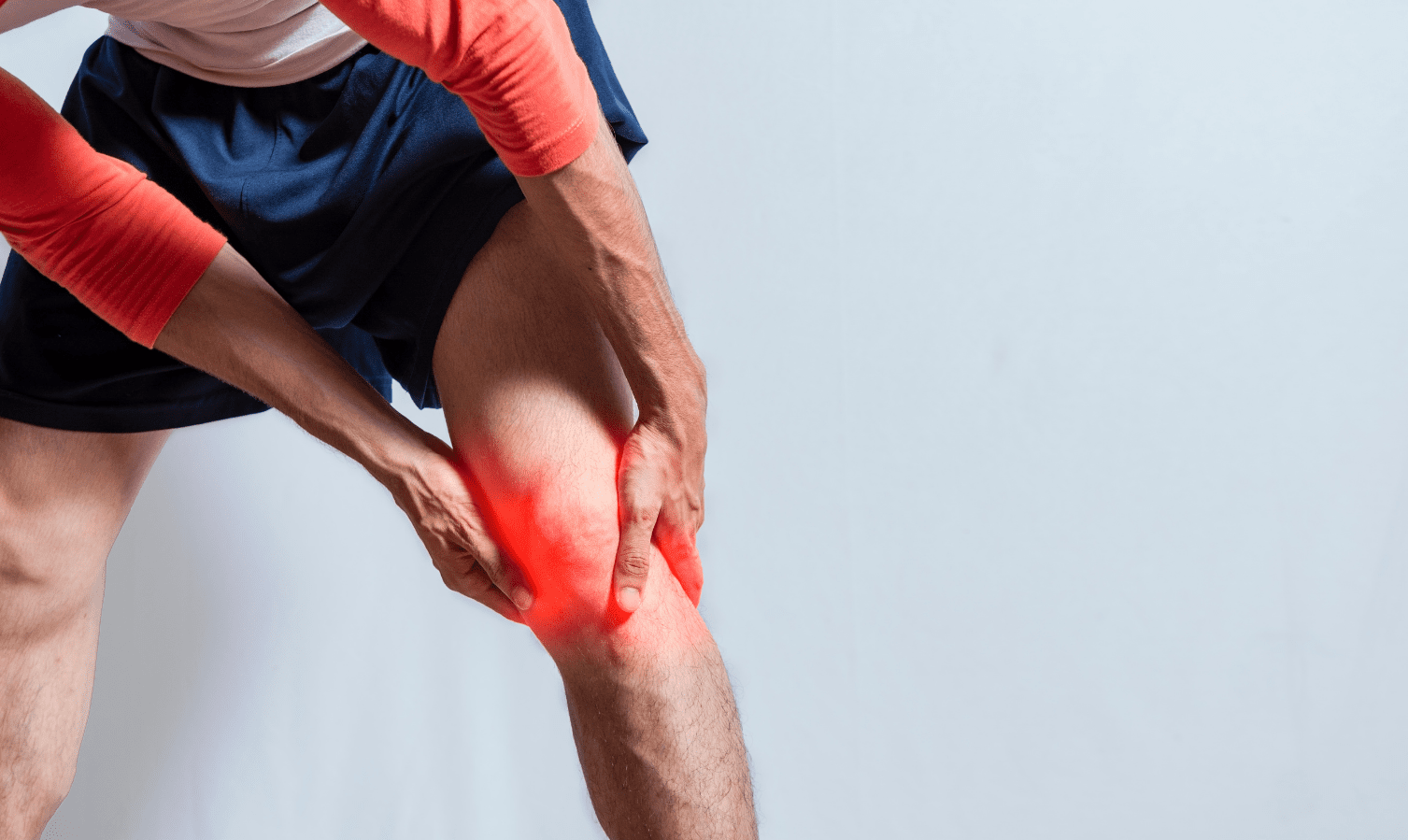If you’re a combat sports athlete, you know that intense training sessions can leave you feeling sore and fatigued for days afterwards. This soreness, known as delayed onset muscle soreness (DOMS), can impact your performance and hinder your ability to train effectively. DOMS can also have a potential impact on combat insurance. Therefore, it’s crucial to manage DOMS effectively to prevent injury and ensure that you’re able to continue training at your best.
What is delayed onset muscle soreness?
Delayed onset muscle soreness (DOMS) is a type of muscle soreness that occurs 24-72 hours after exercise. DOMS can cause muscle stiffness, tenderness, and reduced range of motion, which can impact your ability to perform at your best in future training sessions or events.
What causes DOM?
It’s caused by microscopic tears in muscle fibres that occur during eccentric (lengthening) contractions, such as those that occur during plyometric exercises, downhill running, or combat sports training.


How DOMS impacts the body and why it’s important to manage it effectively?
Managing DOMS is important not just for athletic performance but also for insurance purposes. Combat insurance provides comprehensive insurance coverage for fighters, gyms, associations, and events. However, frequent or severe injuries may impact your coverage and premiums. Therefore, managing DOMS can help reduce your risk of injury and potentially minimise the impact on your insurance.
In this post, we’ll discuss five strategies to help alleviate DOMS after combat sports training. These strategies include massaging sore muscles, attenuating eccentric muscle damage, focusing on nutrition and hydration, incorporating active recovery techniques, and prioritising rest and recovery. By using these strategies effectively, you can minimise the impact of DOMS and continue training at your best.
Five Strategies to alleviate DOMS
1- Massaging Sore Muscles
One of the most effective strategies for alleviating DOMS after combat sports training is massaging sore muscles. Massage therapy has been shown to improve circulation, reduce inflammation, and promote relaxation, all of which can help alleviate DOMS and improve recovery.
When you massage sore muscles, you increase blood flow to the affected area, which can help flush out toxins and promote the delivery of nutrients and oxygen to the muscle tissues. This can help speed up the healing process and reduce inflammation, which is a major contributor to DOMS. Additionally, massage therapy can help reduce muscle tension and promote relaxation, which can help reduce the feeling of soreness and stiffness.
To effectively massage sore muscles, start by applying gentle pressure to the affected area using your fingers, palms, or a foam roller. Focus on the areas where you feel the most soreness and work in a circular motion, gradually increasing pressure as the muscle tissue begins to relax. You can also incorporate techniques like trigger point release, deep tissue massage, or myofascial release to further promote muscle relaxation and alleviate DOMS.
2. Nutrition and Hydration
Proper nutrition and hydration play a crucial role in managing DOMS after combat sports training. The foods and fluids you consume can impact inflammation levels, muscle recovery, and overall performance, making it essential to fuel your body with the right nutrients and stay hydrated.
Certain nutrients can help reduce inflammation and support muscle recovery, such as omega-3 fatty acids, antioxidants, and protein. Omega-3 fatty acids, found in foods like salmon and walnuts, have been shown to have anti-inflammatory properties, which can help reduce the severity of DOMS. Antioxidants, found in foods like blueberries and dark chocolate, can help protect against oxidative stress caused by intense exercise and promote muscle recovery. Protein is essential for muscle repair and growth, making it important to consume enough protein-rich foods like chicken, fish, and beans.
In addition to proper nutrition, staying hydrated is essential for managing DOMS. Dehydration can contribute to muscle soreness and stiffness, making it important to drink enough fluids before, during, and after exercise. Aim to drink at least eight glasses of water per day, and consider incorporating fluids like coconut water or sports drinks to replenish the electrolytes lost during exercise.
3. Active Recovery Techniques
Active recovery techniques such as light exercise, stretching, and other gentle movements can help improve blood flow and reduce muscle tension, promoting faster recovery and reduced soreness.
Some of the benefits of active recovery techniques include increased flexibility, improved range of motion, and decreased muscle stiffness. Light cardio exercises such as walking, cycling, and swimming can help improve circulation while stretching and yoga can help release tension and improve mobility.
When incorporating active recovery into your training regimen, it’s important to listen to your body and avoid overexertion. Examples of active recovery exercises that combat sports athletes can incorporate into their routines include walking, cycling, yoga, Pilates, and foam rolling. These exercises can be done on rest days or as part of a cool-down routine after training. By incorporating these techniques into your training regimen, you can help manage DOMS and improve overall recovery time.
4. Rest and recovery
Rest and recovery are essential for preventing DOMS and supporting muscle repair. Make sure you’re getting adequate sleep, taking rest days between workouts, and avoiding overtraining. Additionally, consider incorporating techniques like ice baths, compression therapy, and sauna sessions to further support muscle recovery and alleviate DOMS.
5. Attenuating Eccentric Muscle Damage
Eccentric muscle damage refers to the tearing or damage of muscle fibres that occurs during the lengthening phase of a movement. This type of muscle damage is a major contributor to DOMS, and it can significantly impact performance and recovery for combat sports athletes.
One way to attenuate eccentric muscle damage and reduce the risk of DOMS is to focus on proper warm-ups and cool-downs. Warming up before a training session or fight can help prepare the muscles for the physical stress to come, reducing the risk of injury and minimising the impact of eccentric muscle damage. Additionally, cooling down after a training session can help promote blood flow and reduce inflammation, helping the muscles recover more quickly and reducing the risk of DOMS.
Another strategy for attenuating eccentric muscle damage is to adjust training intensity appropriately. Overtraining or pushing the body too hard can increase the risk of muscle damage and delayed muscle soreness, so it’s important to listen to your body and adjust your training regimen as needed. This may mean taking rest days when needed, adjusting the intensity or duration of your workouts, or seeking guidance from a coach or trainer to help ensure that you’re training in a safe and effective way.
Click here if you want to read about other common minor injuries that occur during combat sports


DOMS and how it is different from acute muscle soreness
Delayed onset muscle soreness (DOMS) is a type of muscle soreness that typically occurs 24-72 hours after physical activity, such as combat sports training or competition. DOMS is characterised by a dull, aching pain in the muscles, which can make it difficult to move or perform physical activity.
DOMS is different from acute muscle soreness, which is a more immediate type of muscle soreness that occurs during or immediately after physical activity. Acute muscle soreness is typically caused by the buildup of lactic acid and other waste products in the muscles, while DOMS is caused by microscopic damage to the muscle fibres.
While acute muscle soreness typically goes away within a few hours to a day after physical activity, DOMS can last for several days and may be accompanied by other symptoms such as stiffness and reduced range of motion. DOMS can be challenging to manage, but there are several strategies that combat sports athletes can use to alleviate symptoms and support muscle recovery. By understanding the differences between acute muscle soreness and DOMS, combat sports athletes can take steps to optimise their training and minimise the impact of muscle soreness on their performance and overall well-being.
While DOMS is a normal and expected response to physical activity, it’s important for combat sports athletes to take steps to manage and alleviate symptoms in order to prevent injury and optimise recovery.
At Combat Sports Australia, we provide comprehensive insurance coverage for fighters, gyms, associations, and events. With our extensive experience in the industry, we understand the unique risks and challenges that combat sports athletes face, and we’re committed to providing tailored insurance solutions that meet their needs. Contact us today to learn more about our services and how we can help you protect your business and your future in combat sports.




